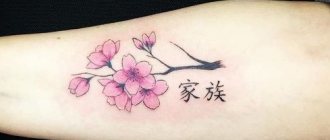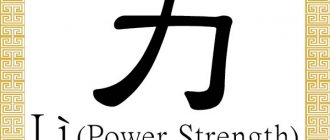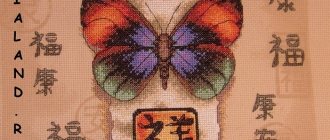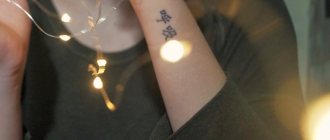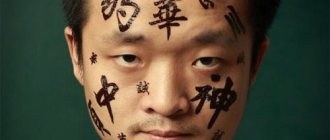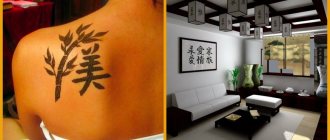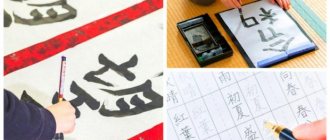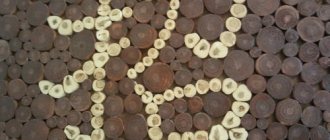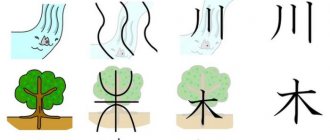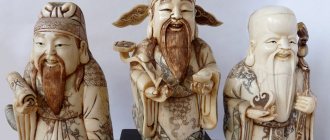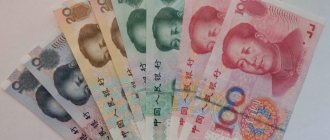Feng Shui... the philosophy of success and prosperity, the teaching of harmony and peace, the ancient Chinese science of attracting happiness and prosperity. How many sacred gifts are stored in it! The sages who created all the postulates of Feng Shui not only respected the laws of Genesis, but also took care of their safety. It is not surprising that so many different and effective ways to improve our lives have come to us. One of them is writing hieroglyphs.
For a European person, a hieroglyph is an incomprehensible combination of dashes and squiggles. However, all these keys were created for a reason, but were a prototype of the surrounding world. Each sign is a specific symbol of water, man, mountains, trees, and so on. This is why hieroglyphs have such power and are rightfully recognized as one of the most effective talismans for attracting good luck, love or happiness into your life!
Want to test their effects for yourself? Let me offer you a choice of several excellent and time-tested hieroglyphs-talismans:
Chinese symbol of love, with and without heart
New Tang Dynasty Television once broadcast news of more than 100 Taiwanese entrepreneurs living in Shanghai returning to Taiwan to hire young people to work in their companies. When asked why they had to recruit from Taiwan when there were so many talented people in Shanghai, a manager at a human resources company explained, “It's because of the wolfish nature of the youth in mainland China.” He also said that youth in Taiwan have greater creativity and greater loyalty to the company they work for.
Young people of the same race speak the same language, so why do they retain the qualities of loyalty and fidelity built into traditional Chinese culture on the one hand, but a heartless nature on the other? Perhaps we can find the key to the Chinese character 愛 (ai), which means love. The hieroglyph originally depicted a symbol that had no deep sentimental meaning associated with a person or event, rather it was an expression of gratitude from a hungry person.
When the concept of 愛 was created, the following version was first written - 㤅 (an expression of gratitude for receiving food). 旡 at the top looks like a hungry man with a big open mouth. The bottom part is the symbol 心, meaning heart, this is a literal representation of the physical heart. During the Qin Dynasty over 2,000 years ago, the image of a slow walking pace, 夊, was added at the bottom to show reluctance to part with something. This completed the final meaning - the Japanese character for "love". If one is truly in love or truly grateful, one must do it with heart.
However, in a simplified version of the Chinese character, the heart in the center has been removed:
Young people from Taiwan, Hong Kong, Macau and even Japan write the symbol of love with a heart, while young people from mainland China write "love" without a heart. This makes one wonder whether the real motive behind simplifying the Chinese script was to undermine the traditional values of the Chinese people.
Story
The modern Chinese alphabet has more than 50 thousand characters; no other writing system can boast of such a number of letters. They serve to convey meaning rather than phonetic meaning; by studying them, you understand more about the culture of the country and its people. Some scientists believe that Chinese writing arose 6 thousand years ago, but this hypothesis is not supported by facts.
Hieroglyphs consist of 24 strokes and 316 graphemes, have a long history, and continue to change. Ancient Chinese literates who could read and write did not strive to simplify the alphabet. On the contrary, they made a cult out of him, attributed magical abilities, and deified him. We can say that these pictures shaped the Chinese people's perception of the world around them. Folk art, traditions, love relationships were formed under the influence of original writing and language.
IMPORTANT: In the 60s of the 20th century, the government of the Celestial Empire, in order to increase the literacy of the population, simplified the hieroglyphs, reducing the number of features.
Traditions of the East
People have always been surprised by other cultures and traditions. Everything alien, at a minimum, arouses interest, and sometimes fascinates and forces you to follow you. The spiritual treasures of other cultures, not related to the Slavic ones, enter our lives with a firm and confident step, introducing a certain amount of diversity, mystery, and novelty. Take, for example, Feng Shui, designed to arrange space according to the principles of harmony and fill it with love, happiness and prosperity.
Japanese and Chinese characters for “love” are written almost identically. What is this connected with? Hieroglyphs came to Japan from China. But they were not simply copied. The Japanese have managed to introduce many poetic and personal touches that gracefully complement the traditional ancient roots. Both the Chinese and Japanese characters for "love" are very powerful and can attract these feelings into real life. Believe it or not? You decide.
Rose quartz
According to the teachings of Feng Shui, stones can also awaken feelings, and rose quartz is especially successful in these matters. In China, jewelry and talismans with this mineral are sold at every turn. The action of rose quartz is based primarily on awakening self-love in a person, since without it he will never feel worthy of happiness and will not meet his other half.
For married couples, such a talisman will help in solving complex family problems. It harmonizes the relationship between partners and will return lost romance to them if it has been “lost” somewhere over the many years of marriage.
Hieroglyph “love”: photo and transcript
When you look at the symbol, the following association may arise: a beautiful butterfly fluttering airily over a closed flower bud. The hieroglyph “love” is happiness and peace for existing relationships, and attracting a soul mate promises a symbol for single people. If we decipher the hieroglyph in parts, then it consists of four elements: claws, blanket, heart and friend. Love is something that very strongly and deeply, like claws, digs into the heart and covers. It's like friendship, but much more.
Writing rules
To write characters correctly, you need to be completely proficient in calligraphy. But still, you can learn to depict some signs; for this you need to know their name and spelling. The hieroglyph love consists of 10 traits, the complex version contains all 13.
It includes:
- key graphemes (mini-hieroglyph associated with the meaning of the entire symbol);
- traits that are written in a certain direction;
- ligatures, made from dashes written together (without lifting the pen from the paper).
Imagine a square into which the symbol will fit, each part of it will take its place in the imaginary figure.
5 general rules for outline:
- Features that are at the same height are written sequentially:
- horizontal;
- vertical;
- folding
- The horizontal line is interrupted in the lower right corner and is depicted last.
- The line is drawn first, being the covering line, and the last line being covered.
- When a row consists of three lines and the extreme ones are symmetrical to each other, then the middle one is written first, and then the left and right lines.
- The line with the hook is located at the bottom right, so it is depicted as the penultimate one.
By following simple spelling, it is easy to get a beautiful and correct symbol.
INTERESTING: The hardest character to write is biang, meaning a type of noodle in one of the provinces of China; it is not in dictionaries or computer fonts due to its rare use; it consists of more than 60 strokes.
Hieroglyph “love”: tattoo with meaning
Dancing fancy Chinese and Japanese characters are quickly becoming one of the most famous tattoos. Nowadays, it’s quite common to see people with a tattoo that looks like a mysterious oriental alphabet. The reason for the huge popularity of such tattoos is that they are not just letters. People believe that if you hang images of Chinese and Japanese characters at home, symbolizing good luck, wealth, love, happiness, you can actually attract them into your life.
Direct application to your skin will help enhance the effect. At least that’s what those who get tattoos with Chinese characters believe. This is quite bold, it is not just wearing a T-shirt with a symbol of happiness, for example. Therefore, before you get this or that tattoo, carefully and thoughtfully study the information on the desired symbol, so that together with the hieroglyph “eternal love” you do not end up with “eternal problems”.
FENG SHUI SYMBOL VS OFFICE POLICY
Sometimes the office can be more brutal than the battlefield. You will find that a colleague takes responsibility for your work, leaving with less work and more pay.
Or it could be your boss who makes you want to tear your hair out by giving you unreasonable tasks. You may receive hostile stares, be left out of group dinners, and develop a bad reputation. All this leaves you frustrated and unmotivated, and your office life will become a nightmare.
The Rooster will help you thrive in a world of lies, betrayal and dirty tricks. This will make the office a positive place for you and will ensure that you don't get stabbed in the back at the worst possible time. The Rooster will help you sort out political problems, disputes and envy in the office or business.
Such different hieroglyphs: ideography
Hieroglyphs are not only Japanese and Chinese, there are also Egyptian, Arabic and Korean. It's kind of an elegant combination of painting and writing. It’s beautiful, but writing even a small text can take quite a long time if you do it by hand. As you know, hieroglyphs are not letters, but entire morphemes, words and even phrases.
Ideography (“writing an idea”) is a writing principle in which the unit of graphic designation is most often a whole word. It is from here that the development of writing originates. The most ancient are considered to be ancient Egyptian, Sumerian and Chinese. The first two are no longer used, but the Chinese honor the traditions of their ancestors and continue to use special characters as a modern means of writing.
Initially, hieroglyphs took the form of pictograms, simpler images of an everyday nature. However, not everything can be depicted with a picture. Difficulties arose when it was necessary to express abstract concepts in writing. For example, the symbol for “bao (guard)” is a combination of the characters for “man” and “child.”
Peonies
Flowers, especially peonies, also bring love energy into the house. Feng Shui experts recommend that single girls who want to get married quickly should keep a bouquet of live peonies or a painting with their image at the entrance to the bedroom. It can be embroidery or artistic canvas.
But in the bedroom of married people such a talisman is not needed. Although images of peonies can make a spouse more loving, they can also force him to flirt and cheat with other women. Therefore, after you have met your other half, it is better to remove peonies from the bedroom.
Mysterious and beautiful Asia
For the average European, hieroglyphs are an obscure combination of dashes and hooks. But every stroke has its own meaning, every uneven loop is a prototype of the surrounding world. They are considered to be symbols and effective talismans for acquiring happiness, love, prosperity, health or wealth in a miraculous way. Take, for example, a hieroglyph to attract love. According to Feng Shui, such a powerful talisman is best hung in the southwest. You can also write it on a piece of paper and always take it with you. They say you should wear it close to your heart. Some even get a tattoo in this area.
Phrases for expressing love in Japanese
There are several phrases you can use to tell someone you love them, but remember to pay attention to the context to make sure you use the right expressions.
Kokuhaku 告白
Before you even think about how to declare your feelings in a romantic sense, you must understand kokuhaku
- “confession”. This is when you "confess" your feelings for someone in hopes of reciprocation.
In case of recognition, you can say: “ tsukiatte kudasai
付き合ってください”, which means: “Please date me” or “Can we go on a date?”
Tsukiau
付き合う in this case means “to meet” with the connotation of romantic dates.
Without this recognition, you are technically not in a romantic relationship with the other person.
Suki desu 好きです and daisuki desu 大好きです
“Suki desu
” means “to love,” so if you take someone aside and tell that person “suki desu!” or “suki dayo!” (informal), this will mean that you like him as more than just a friend.
Often in this context, this phrase is used to mean “I love you,” even if the Russian translation is “I like you.”
“Daisuki desu
” means to really like something very much, so it has the same meaning as “suki desu”.
For example, if you want to confess your feelings for someone, you could say:
Suki desu! Tsukiatte kudasai.
I like you/I love you. Please date me.
Note that often both suki desu and daisuki desu are used in a more general sense to express that you like something, not just in a romantic context.
Aishiteru
Technically it means "I love you" and can only be used in a romantic context. Whether you can actually say this to someone is another matter, because this method of declaring love is very rarely used and is extremely serious.
Japanese character for "happiness"
If everything is fine with love, but you are missing a little happiness, then the Japanese character for “happiness” will help you. Here are some options for his image:
幸 and 福, and you can often find their combination 幸福.
Place it in your home and you will be happy. There is even a separate hieroglyph for “double happiness.” It is written as shown in the picture below:
Mystic knot
This interesting Chinese pattern, which has no ends, in a love relationship means infinity of feelings. It can be used in the same way as a sign of double happiness - applied to any object, hung as a decoration on the neck or placed somewhere in the interior.
Many people have a question: if a mystical or, as it is also called, a magical knot brings success in all areas of life, how can you set it up specifically for success in personal relationships?
Everything is very simple: you need to make it from a thread yourself or draw it with your own hands, putting the message you need into the amulet - then it will be charged with your energy and will “work” exactly in the area in which it is needed.
Love comes in different forms
The Japanese character for love, 愛 (pronounced ai), is a very popular choice. But it should not be confused with another image of love - 恋 (read koi), which specifically means a romantic feeling, the desire to possess the object of one’s adoration. In the first version, love is presented in a general sense, for the weather, nature, and so on, not only for a specific person.
How is it read?
Once you understand the meaning and spelling of the hieroglyph love, you can try to read it. It reads quite succinctly ai [ai], perhaps due to its components. You need to know some rules in order to interpret it correctly in various sentences. Chinese language does not imply:
- kind;
- cases;
- declinations;
- conjugations;
- numbers;
- verb tense.
All words have a certain order in a sentence; they cannot be rearranged, otherwise the expression will completely lose its meaning. This is due to the ancient origin of the language; it was formed at a time when the main means of communication were gestures.
REFERENCE: To pass the exam in China, a foreigner needs to know about 3000 characters.
Chinese philosophy
Yin Yang – Yīnyáng – 阴阳. In Chinese philosophy, Yin and Yang (dark - light, negative - positive, masculine and feminine) describe how seemingly opposing forces can actually be complementary, interconnected and interdependent in the natural world, and how they can give rise to each other as they interact between themselves. Many material dualities (such as light and dark, fire and water, expansion and contraction) are seen as physical manifestations of duality.
Some of the Feng Shui tips are:
- Don’t get carried away too much and clutter the entire space with images of happiness and good luck; use no more than three positive hieroglyphs with different meanings in the corresponding areas of the house.
- If you want to give a gift to a loved one, then send your positive vibrations along with the talisman with a mental visualization of what you wish for him.
- Connect the meaning of the hieroglyphic symbol with the image and energy of the recipient.
Mandarin ducks
These birds are considered a symbol of love according to Feng Shui for a reason, since they find a mate once and remain with their partner for the rest of their lives. If suddenly a separation occurs between the ducks, they sometimes can no longer meet new love and remain faithful to their only soul mate.
Tangerine ducks are not only very powerful, but also the oldest talisman of love in Eastern countries.
If such ducks are placed in the bedroom, they will strengthen the marriage and make the relationship more harmonious and happy. If the figurines “settle” in the home of a lonely person, they will help him meet true love and find personal happiness.
"Hope"
The character 望 can be broken down into three elements : "pass away" 亡 on the top left, "moon" 月 on the top right, and "king" 王 on the bottom. The element “moon” is the key of the hieroglyph – key number 74 .
They:ボウモウ
Kuna:のぞ(む) – to wish; hope; to see in the distance のぞ(み) – desire; hope のぞ(ましい) – desirable
In order for the sign to be better remembered, let's learn the mnemonic rule : “hope” 望 “king” 王 “dies” 亡 by the light of the “moon” 月.
| Word | Reading | Translation |
| 希望 | きぼう | hope |
| 展望 | てんぼう | review, review; view, panorama; perspective; visibility |
| 所望 | しょもう | wish; desired |
| 本望 | ほんもう | a long-standing desire, a cherished dream; satisfaction |
